
|
|
Font Size:
|
||||
|
|
|
|
||||
STATISTICAL BRIEF #277:
Trends in Outpatient Prescription Gastrointestinal Agents Purchases and Expenditures for the U.S. Civilian Noninstitutionalized Population, 1997 and 2007
Highlights
- From 1997 to 2007, total expenditures for prescription gastrointestinal agents purchased in an outpatient setting more than doubled, rising from $7.0 billion to $18.9 billion.
- The average expenditure for persons with at least one prescription medicine purchase of an outpatient gastrointestinal agent rose from $386 to $653, when comparing 1997 to 2007.
- From 1997 to 2007, the average expenditure per drug purchase of an outpatient prescription gastrointestinal agent increased from $90 to $120.
- When comparing the years 1997 and 2007, the proportion of the population purchasing at least one outpatient prescription gastrointestinal agent increased for all age categories: age 17 and younger (1.5 percent and 2.5 percent), ages 18-64 (6.4 percent and 8.9 percent) and age 65 and older (18.6 percent and 26.6 percent).
- The proportion of the population purchasing one or more outpatient prescription gastrointestinal agent increased for all poverty status categories: poor (7.2 and 9.7 percent), near poor/low income (6.9 and 10.4 percent), middle income (6.5 and 8.9 percent) and high income (6.4 percent and 9.8 percent) when comparing the years 1997 and 2007.
Introduction
This Statistical Brief presents trends in utilization and expenditures for outpatient prescription gastrointestinal agents for the years 1997 and 2007. The estimates are for the U.S. civilian noninstitutionalized population and are derived from the 1997 and 2007 Household Component of the Medical Expenditure Panel Survey (MEPS-HC). For outpatient prescription gastrointestinal agents, the Brief compares 1997 and 2007 total expenditures, total number of purchases, and average annual expenditure per person with a purchase and average expenditure per purchase. It also compares proportions of the population purchasing gastrointestinal agents by socioeconomic and demographic characteristics.
Gastrointestinal or digestive conditions in the past and today cause millions of Americans to suffer and can also limit quality of life. Prescribed medicines are one of many treatments for digestive conditions. Examining trends related to prescribed medicines gastrointestinal agents expenditures and purchases provides knowledge on the role these types of drugs have played in treating such conditions as well as who receives such treatment.
Only prescribed medicine purchases in an outpatient setting are included in the estimates presented in this Brief. Prescription medicines administered in an inpatient setting or in a clinic or physician's office are excluded from the estimates in this Brief. Expenditures are in real dollars; estimates for 1997 were adjusted to 2007 dollars based on the GDP Price Index (http://www.meps.ahrq.gov/mepsweb/about_meps/Price_Index.shtml). All differences discussed in the text are statistically significant at the 0.05 level.
Findings
In 1997, there were 271.3 million persons in the U.S. noninstitutionalized civilian population and the proportion of the population purchasing at least one outpatient prescription gastrointestinal agent was 6.7 percent (or 18.1 million people). In 2007, the total U.S. noninstitutionalized civilian population had grown to 301.3 million persons and the proportion of the population purchasing at least one gastrointestinal agent rose to 9.6 percent (or 29.0 million people).When comparing 1997 and 2007, MEPS estimates showed an increase in total expenditures of 170 percent rising from $7.0 billion in 1997 to $18.9 billion in 2007 for prescription gastrointestinal agents (figure 1).
Total prescribed medicine purchases of prescription gastrointestinal agents rose from 77.8 million prescription purchases in 1997 to 158.4 million prescription purchases in 2007 (figure 2).
When comparing 1997 and 2007, for those with at least one prescription gastrointestinal agent drug purchase, the average annual expenditure per person for gastrointestinal agents increased about 69 percent from $386 to $653 (figure 3).
The average expenditure for an outpatient prescription gastrointestinal agent increased 33 percent when comparing 1997 with 2007, rising from $90 in 1997 to $120 in 2007 (figure 4).
For the years 1997 and 2007, when comparing the proportion of the population purchasing at least one prescription gastrointestinal agent by the following age categories: age 17 and younger (1.5 percent to 2.5 percent), ages 18-64 (6.4 percent to 8.9 percent), and age 65 and older (18.6 percent to 26.6 percent), all age groups had increased proportions (figure 5).
When comparing the years 1997 and 2007 and the proportion of the population purchasing at least one prescription gastrointestinal agent by race/ethnicity, white non-Hispanics, Hispanics, and black non-Hispanics had increased proportions (increasing from 7.4 percent to 11.3 percent, 4.8 percent to 6.7 percent, and 4.7 percent to 6.1 percent, respectively) (figure 6).
For the years 1997 and 2007, when comparing the proportion of the population purchasing at least one prescription gastrointestinal agent by poverty status, the poor (7.2 percent versus 9.7 percent), the near poor/low income (6.9 percent versus 10.4 percent), those with middle income (6.5 percent versus 8.9 percent), and those with high income (6.4 percent versus 9.8 percent) had increased proportions (figure 7).
When comparing 1997 and 2007, there was an increase in the proportion of the population purchasing at least one outpatient prescription gastrointestinal agent for all health status categories: persons in excellent health (2.4 percent and 3.5 percent, respectively), persons in very good and good health (6.6 percent and 10.1, respectively), and persons in fair and poor health (21.2 percent and 26.3 percent, respectively) (figure 8).
Data Source
The estimates shown in this Statistical Brief are based on data from MEPS HC-068: Multum Lexicon Addendum Files, MEPS HC-020: 1997 Full Year Consolidated Data File, MEPS HC-016A: 1997 Prescribed Medicines File, MEPS HC-113: 2007 Full Year Consolidated Data File, and MEPS HC-110A: 2007 Prescribed Medicines File.
Definitions/Methodology
Purchases and expenditures
Purchases were defined as gastrointestinal agents prescribed and purchased in the year of interest. Refills as well as original prescriptions are included in expenditure and purchases estimates. Individuals were classified as purchasing a prescribed gastrointestinal agent if they reported one or more such purchases during the year of interest. Expenditures include the total direct payments from all sources to pharmacies for prescriptions reported by respondents in the MEPS-HC. Expenditures are in real dollars; estimates for 1997 were adjusted to 2007 dollars based on the GDP Price Index (http://www.meps.ahrq.gov/mepsweb/about_meps/Price_Index.shtml).
Therapeutic classifications
Therapeutic class and subclass were assigned to MEPS prescribed medicines using Multum Lexicon variables from Cerner Multum, Inc. MEPS prescribed medicines files were linked to the Multum Lexicon database to obtain therapeutic class and subclass variables. The first choice in the linking algorithm was chosen when assigning therapeutic classes and subclasses. For both 1997 and 2007 data, gastrointestinal agents was a therapeutic class of drugs. In 1997, within the gastrointestinal agents therapeutic class, GI stimulants was a first choice therapeutic subclass as was anticholinergics/antispasmodics. In 2007, anticholinergics/antispasmodics was a sub subclass within the new therapeutic subclass functional bowel disorder agents. In addition, in 2007, two more sub subclasses within the therapeutic subclass functional bowel disorder agents were serotoninergic neuroenteric modulators and chloride channel activators. In 2007, there was also the additional of the therapeutic subclass helicobacter pylori (h. pylori) eradication agents in the therapeutic class gastrointestinal agents. In 2007, GI stimulants was not a first choice therapeutic subclass for the MEPS data. For additional information on these and other Multum Lexicon variables, please refer to the Multum Web site.
Age
Age is the last available age for the sampled person. For most persons, this was their age at the end of the year.
Racial and ethnic classifications
Classification by race and ethnicity was based on information reported for each family member. Respondents were asked if each family member's race was best described as American Indian, Alaska Native, Asian or Pacific Islander, black, white, or other. They also were asked if each family member's main national origin or ancestry was Puerto Rican; Cuban; Mexican, Mexicano, Mexican American, or Chicano; other Latin American; or other Spanish. All persons whose main national origin or ancestry was reported in one of these Hispanic groups, regardless of racial background, were classified as Hispanic. Since the Hispanic grouping can include black Hispanic, white Hispanic, Asian and Pacific Islanders Hispanic, and other Hispanic, the race categories of black, white, Asian and Pacific Islanders, and other do not include Hispanic. Beginning in 2002, MEPS respondents were allowed to report multiple races, and these persons were included in the other non-Hispanic category. As a result, there was a slight increase in the percentage of persons classified in this category in 2002 compared with prior years.
Poverty status
Sample persons were classified according to the total yearly income of their family. Within a household, all people related by blood, marriage, or adoption were considered to be a family. Poverty status categories are defined by the ratio of family income to the Federal income thresholds, which control for family size and age of the head of family. Poverty status was based on annual income in 1997 and 2007.
Poverty status categories are defined as follows:
- Poor: Persons in families with income less than or equal to the poverty line, including those who had negative income.
- Near poor: Persons in families with income over the poverty line through 125 percent of the poverty line.
- Low income: Persons in families with income over 125 percent through 200 percent of the poverty line.
- Middle income: Persons in families with income over 200 percent through 400 percent of the poverty line.
- High income: Persons in families with income over 400 percent of the poverty line.
Perceived health status
During each round of interviewing, the household respondent was asked to rate the health of each person in the family according to the following categories: excellent, very good, good, fair, and poor. For this Brief, the categories very good and good were combined into one category and the categories fair and poor were combined into one category.
About MEPS-HC
MEPS-HC is a nationally representative longitudinal survey that collects detailed information on health care utilization and expenditures, health insurance, and health status, as well as a wide variety of social, demographic, and economic characteristics for the U.S. civilian noninstitutionalized population. It is cosponsored by the Agency for Healthcare Research and Quality and the National Center for Health Statistics.
For more information about MEPS, call the MEPS information coordinator at AHRQ (301) 427-1656 or visit the MEPS Web site at http://www.meps.ahrq.gov/.
References
For a detailed description of the MEPS-HC survey design, sample design, and methods used to minimize sources of nonsampling error, see the following publications:Cohen, J. Design and Methods of the Medical Expenditure Panel Survey Household Component. MEPS Methodology Report No. 1. AHCPR Pub. No. 97-0026. Rockville, MD. Agency for Health Care Policy and Research, 1997. http://www.meps.ahrq.gov/mepsweb/data_files/publications/mr1/mr1.shtml
Cohen, S. Sample Design of the 1996 Medical Expenditure Panel Survey Household Component. MEPS Methodology Report No. 2. AHCPR Pub. No. 97-0027. Rockville, MD. Agency for Health Care Policy and Research, 1997. http://www.meps.ahrq.gov/mepsweb/data_files/publications/mr2/mr2.shtml
Cohen, S. Design Strategies and Innovations in the Medical Expenditure Panel Survey. Medical Care, July 2003: 41(7) Supplement: III-5-III-12.
Ezzati-Rice, TM, Rohde, F, Greenblatt, J, Sample Design of the Medical Expenditure Panel Survey Household Component, 1998-2007. Methodology Report No. 22. March 2008. Agency for Healthcare Research and Quality, Rockville, MD. http://www.meps.ahrq.gov/mepsweb/data_files/publications/mr22/mr22.shtml
Suggested Citation
Stagnitti, M. N. Trends in Outpatient Prescription Gastrointestinal Agents Purchases and Expenditures for the U.S. Civilian Noninstitutionalized Population, 1997 and 2007. Statistical Brief #277. January 2010. Agency for Healthcare Research and Quality, Rockville, MD. http://www.meps.ahrq.gov/mepsweb/data_files/publications/st277/stat277.shtml
AHRQ welcomes questions and comments from readers of this publication who are interested in obtaining more information about access, cost, use, financing, and quality of health care in the United States. We also invite you to tell us how you are using this Statistical Brief and other MEPS data and tools and to share suggestions on how MEPS products might be enhanced to further meet your needs. Please e-mail us at mepspd@ahrq.gov or send a letter to the address below:
Steven B. Cohen, PhD, Director
Center for Financing, Access, and Cost Trends
Agency for Healthcare Research and Quality
540 Gaither Road
Rockville, MD 20850
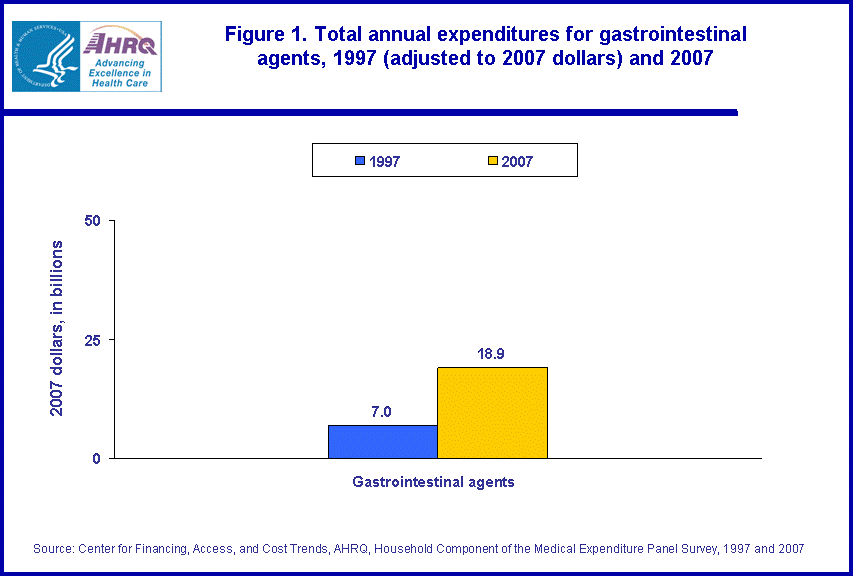 |
|||||||||||||||||||||||||
|
|||||||||||||||||||||||||
|
|
|||||||||||||||||||||||||
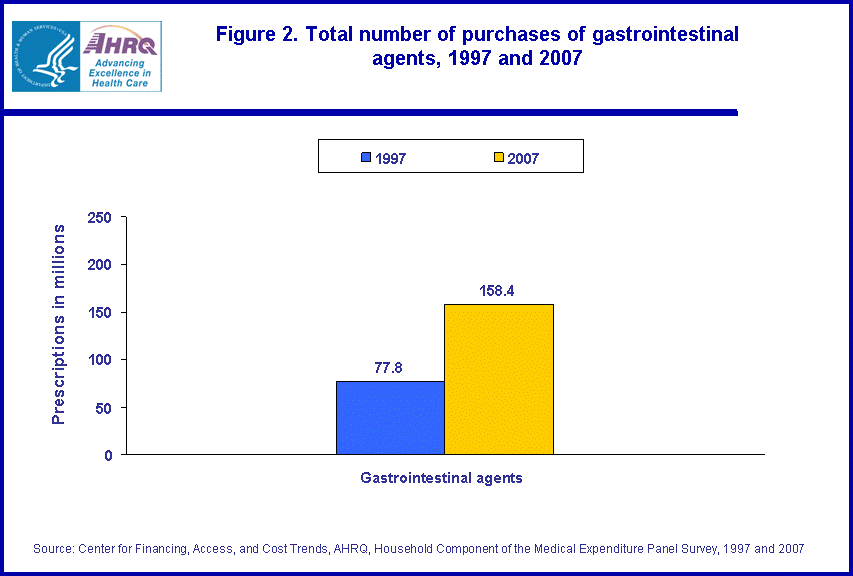 |
|||||||||||||||||||||||||
|
|||||||||||||||||||||||||
|
|
|||||||||||||||||||||||||
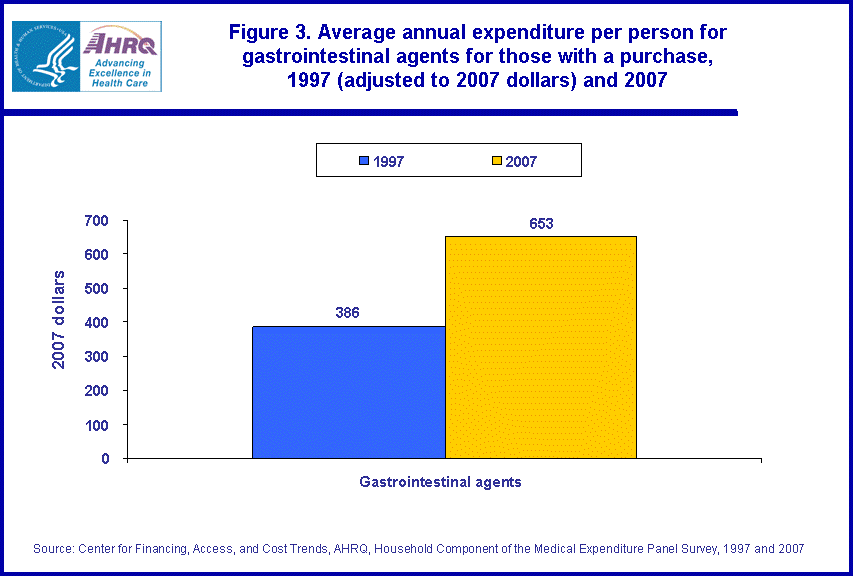 |
|||||||||||||||||||||||||
|
|||||||||||||||||||||||||
|
|
|||||||||||||||||||||||||
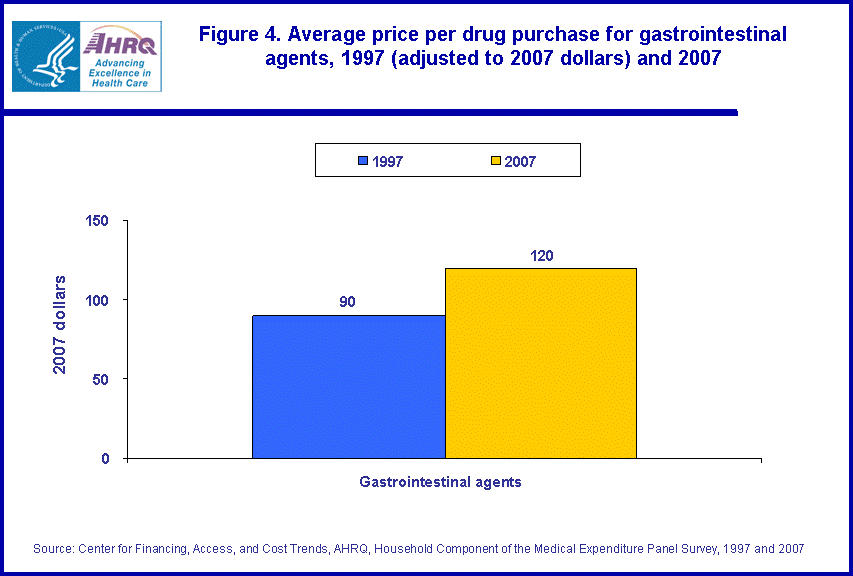 |
|||||||||||||||||||||||||
|
|||||||||||||||||||||||||
|
|
|||||||||||||||||||||||||
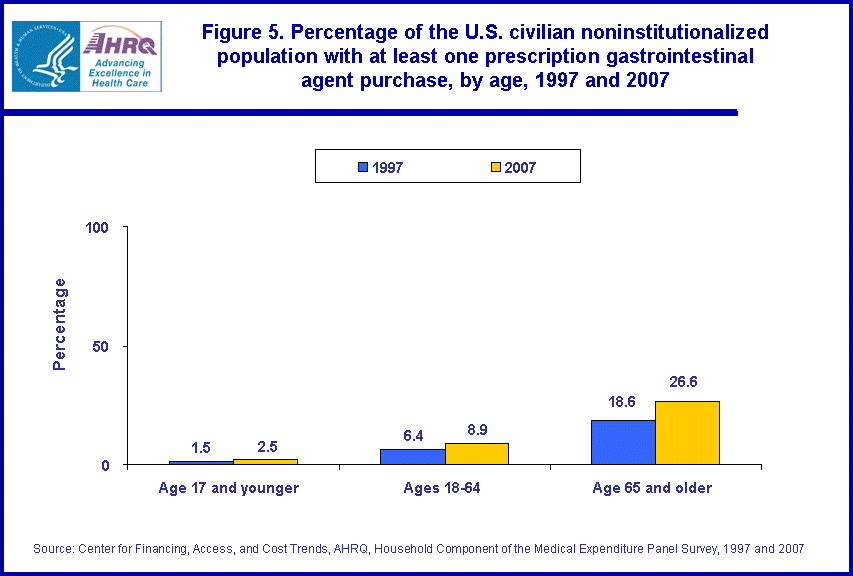 |
|||||||||||||||||||||||||
|
|||||||||||||||||||||||||
|
|
|||||||||||||||||||||||||
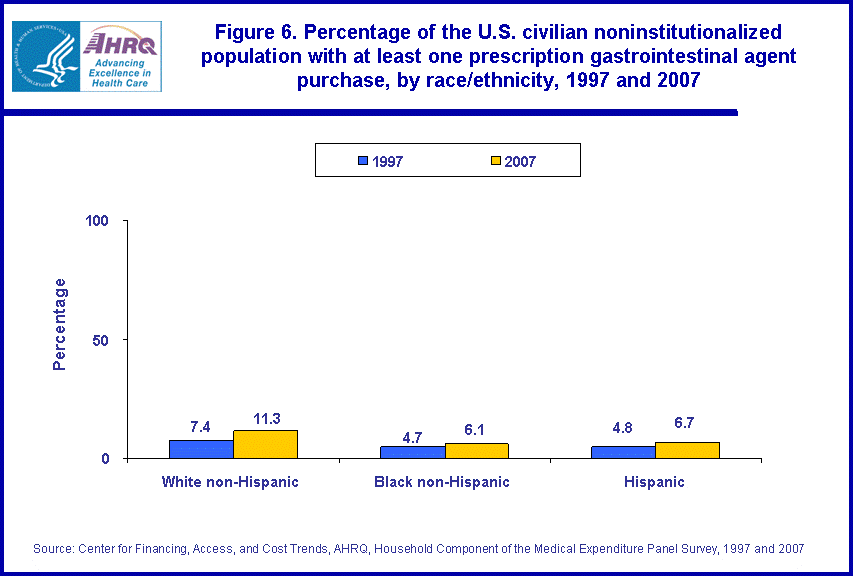 |
|||||||||||||||||||||||||
|
|||||||||||||||||||||||||
|
|
|||||||||||||||||||||||||
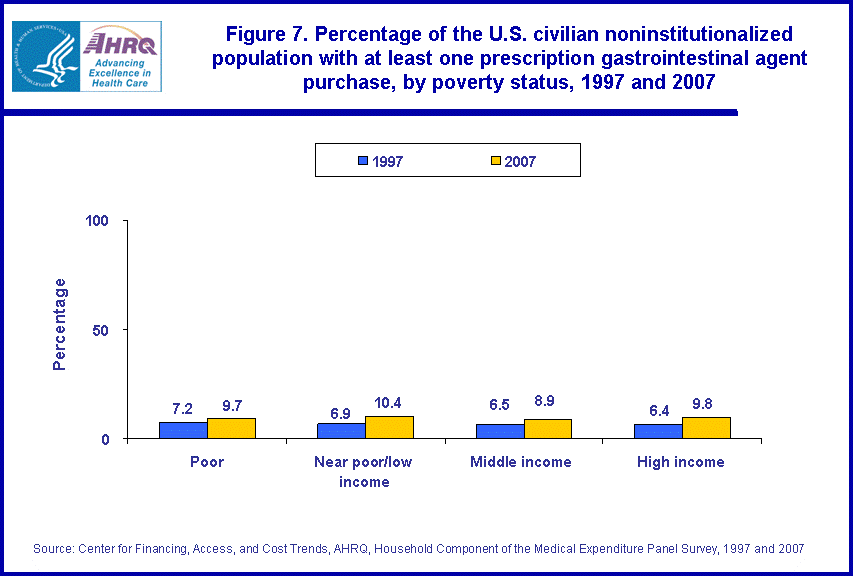 |
|||||||||||||||||||||||||
|
|||||||||||||||||||||||||
|
|
|||||||||||||||||||||||||
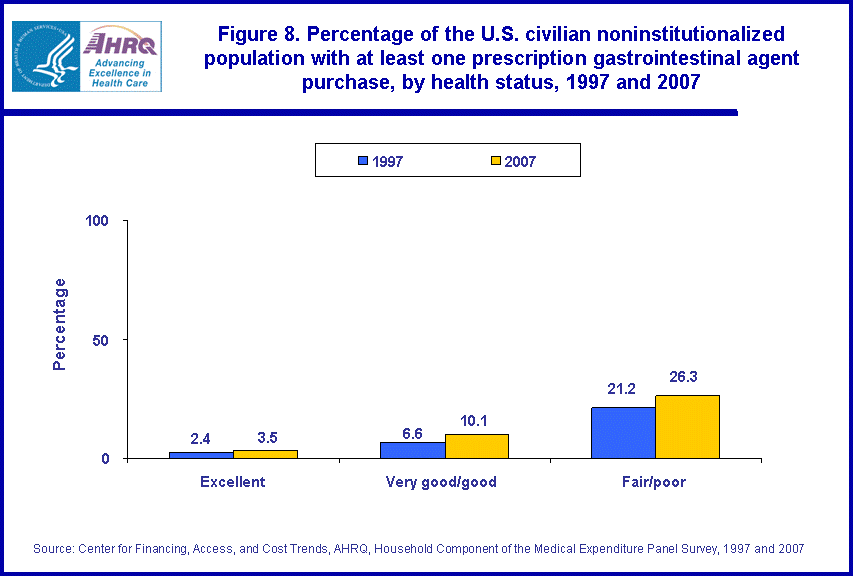 |
|||||||||||||||||||||||||
|
|||||||||||||||||||||||||
|
|
|||||||||||||||||||||||||


